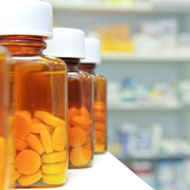
Sets out new action to protect the most vulnerable
A new drug strategy to stop substance misuse and increase the rate of individuals recovering from drug dependence has been launched by the Home Office.
The new strategy sets out new action to protect the most vulnerable, including the homeless, victims of abuse and those with mental health issues.
It brings together the police, health and local partners to support those most at risk. The strategy includes measures to:
• reduce demand: through deterrent work including an expansion of the Alcohol and Drugs Education and Prevention Information Service for young people
• restrict supply: by pursuing a strong law enforcement response and dismantling trafficking networks
• support recovery: a new National Recovery Champion will be appointed to make sure adequate housing, employment and mental health services are available to help people turn their lives around
• drive international action: an international strand is included for the first time, setting out action to strengthen controls at our borders, understand global trends and share intelligence.
Commenting on the strategy, home secretary Amber Rudd said: “Since becoming home secretary I have seen first-hand how drugs can destroy lives. I am determined to confront the scale of this issue and prevent drug misuse devastating our families and communities.
“This government has driven a tough law enforcement response in the UK and at our borders, but this must go hand in hand with prevention and recovery. This new strategy brings together police, health, community and global partners to clamp down on the illicit drug trade, safeguard the most vulnerable, and help those affected to turn their lives around.
She continued: “We must follow through with our commitment to work together towards a common goal: a society free from the harms caused by drugs.”
Home Office figures show that 2.7 million 16-59-year-olds took illegal drugs in 2015/16. This is down 10.5 per cent a decade ago, but new threats are emerging, including new psychoactive substances such as ‘spice’, image and performance enhancing drugs, ‘chemsex’ drugs and misuse of prescribed medicines.



 The RCVS has announced a new version of its 1CPD mobile app, with enhanced features for veterinary surgeons and veterinary nurses to record their continuing professional development.
The RCVS has announced a new version of its 1CPD mobile app, with enhanced features for veterinary surgeons and veterinary nurses to record their continuing professional development.